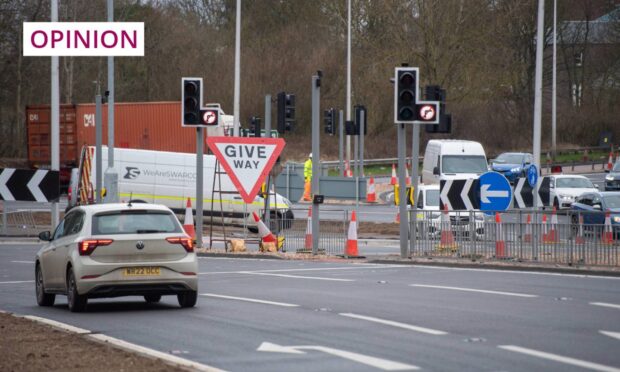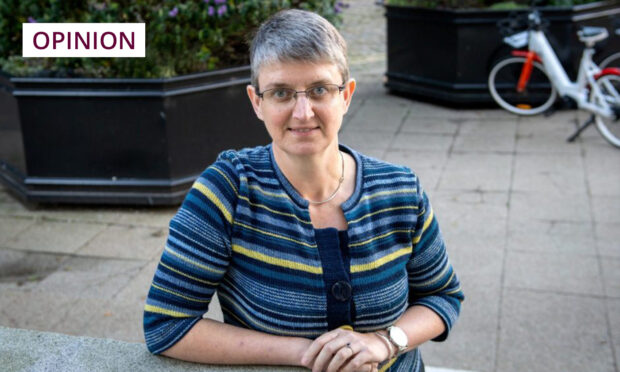Madam, – Fife Council is giving in to the lead developer, Persimmon Homes, on the question of Cupar North.
I have been trying to find out why the council did a complete about-turn regarding the educational provision which will be needed if the huge housing scheme goes ahead.
Firstly, the council stated that Cupar schools are full and a new primary school would be needed at the start of the building.
Then, without reference to the community, they stated that the opposite is the case.
They are currently planning to increase the classroom provision at Castlehill School and erect huts to take infants.
In the statement they say that they are prepared to take the risk that there may not be classroom places for some children.
They do not say how this fits with the detrimental effect bussing children has, or their own policy of encouraging children to walk to school.
I have obtained the minutes of the meeting that decided on the back track.
In this it was agreed that the best option was clearly that a new school should be built at the start of the development.
However, they pointed out that Persimmon Homes refused to fund this option and they would have to find some other plan acceptable to the developer.
There was no reflection that Persimmon Homes made a billion pounds profit last year.
In other words Fife Council is prepared to offer Cupar schoolchildren less than the best in order that developers can make even more profit.
They should be ashamed of themselves.
Ceri Williams.
March Toll Cottage ,
Carslogie Road, Cupar.
Intervention by Queen crucial
Madam, – David Cameron has, quite rightly, been getting a bit of stick for breaking a confidence, with his revelation that he asked the Queen to intervene in the crucial final days of the Scottish independence referendum in 2014.
But he is a politician, they come and go, and nobody is too surprised that a politician might occasionally be a bit devious to obtain the desired outcome.
What is crucial and largely missing from the discussion is that the Queen, the longest serving head of state in the world and who has been lauded for her sense of duty, her grasp of the issues, and commitment to all of her subjects, was prepared to do as she was bidden and interfere directly in politics at such a delicate moment.
And her intervention might well have been crucial: most young people would not have been bothered one way or the other by what she said.
But older voters, many of them royalists, or at least admirers of the Queen, were the section of the population who voted predominantly to remain in the UK.
How many of them were prompted to vote ‘no’ by Her Majesty?
Such a crucial, potentially decisive, intervention, against all protocol, at the tipping point in the referendum, surely undermines even further the unionists ‘will of the people…once in a generation’ argument.
Les Mackay.
5 Carmichael Gardens,
Dundee.
Services before gimmicks
Madam, – I read with incredulity your article “Council reveals the cost of St Matthew’s floodlight scheme, Courier, September 17).
Perth and Kinross Council spent £61,000 lighting up a building that doesn’t even belong to them.
Then they state it is part of a bigger plan to light up Perth costing £12 million, of which they are paying nearly half.
This is an allegedly cash strapped council who are, supposedly, having to make thousands of pounds worth of savings and are regularly either doing away with or cutting services or asking for more money from rate payers, as is the case for collecting garden waste.
This is for services that they have paid for with their council tax and are not receiving.
I am one rate payer who would rather they took that £6 million and the £61,000 and used it to provide the services they were elected to provide.
It is time they remembered they are public servants and also that not all of their rate payers stay in Perth.
Robin Rodger.
24 Honeyberry Drive,
Rattray, Blairgowrie.
Love for open landscapes
Madam, – Alex Bell is is oversimplistic in his comments about deer and trees (Tree handouts for the rich, Courier, September 19).
Certainly deer will eat tree seedlings, as do all herbivores if they are unprotected.
Woodland protection requires fencing in most situations whatever the types of grazing animals present.
Mr Bell questions the Scottish Government policy of incentivising woodland expansion and refers to “uniform spruce”.
In fact his picture is of a Scots Pine plantation and the plantations of serried ranks of spruce planted in the last century are now being harvested and often replaced with much more diverse, mainly native, mixed woodlands which are more in keeping with our mountain landscapes.
In recent years the lion’s share of planting has been carried out on private land, mainly in the uplands.
It is fashionable to advocate “rewilding” – to allow nature to do as it pleases, which would require the near eradication of deer and the removal of sheep.
There is certainly a strong argument for increasing woodland cover, not least to counter climate change, but attitude surveys have shown the strong affection among the people of Scotland for our open landscapes, and indeed for the red deer, which, with the golden eagle and red squirrel is rated as the most popular of our native wildlife species.
Richard Cooke.
Association of Deer Management Groups,
Brechin.
Staying safe in a dangerous time
Madam, – During the 1970s the Cold War brought us intimidation, threat and rumour.
But the threat was real and it was the threat of nuclear attack.
It seemed far removed from rural Perthshire.
But close to Bankfoot, and in other places throughout the country, a secret bunker existed.
It was about 30 feet underground and held sensitive instruments capable of registering the intensity of nuclear fallout in the event of an attack on a major city of military installation.
At that time I became a member of the Royal Observor Corps.
I was one of a very few from Bankfoot and our uniform was the old former RAF dress.
We met every so often in the what had been the Masons’ Hall but we entered our underground bunker and familiarised ourselves with the instruments.
I remember there being only one light, and it was so cold.
Villagers in Bankfoot did not know of us or where the bunker was.
But if the worst case scenario had occurred and our instruments had registered it to be a dangerous event, then a loud klaxon would have sounded out over Bankfoot and, if needs be, the village evacuated.
Indeed, all over the country the Observor Corps was on the front line.
Being in that position I must disagree with the SNP policy of getting rid of our nuclear deterrent if Scotland becomes independent.
We still live in a very dangerous and unpredictable world.
Thomas A Brown.
18 Garry Place,
Bankfoot.










